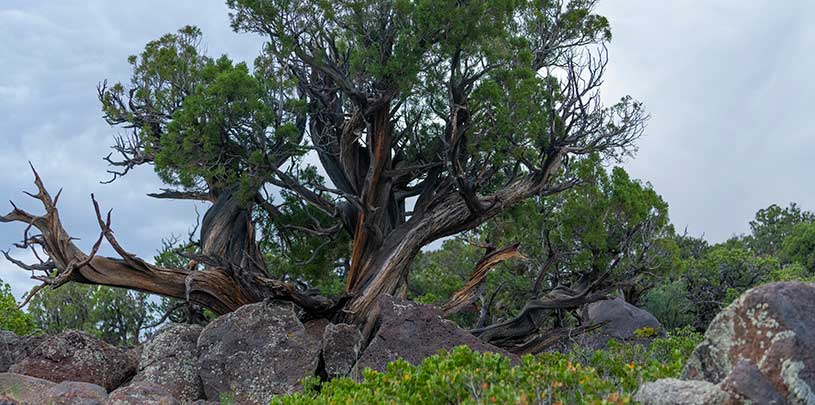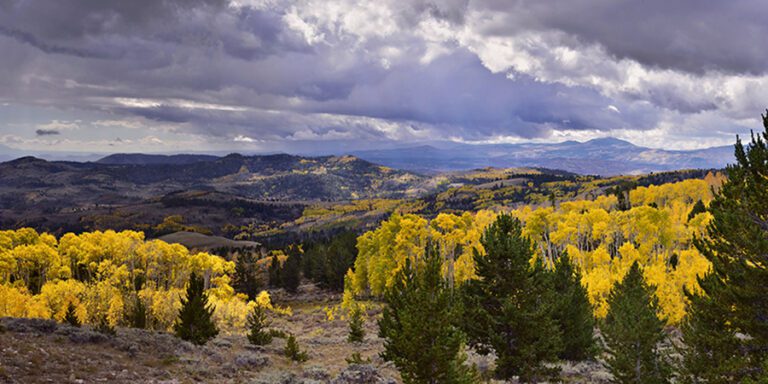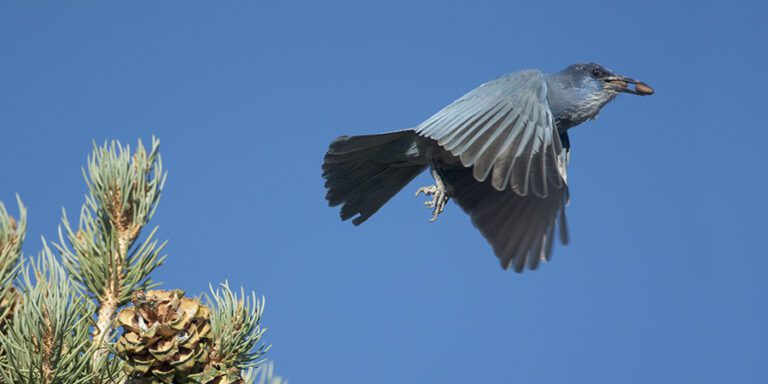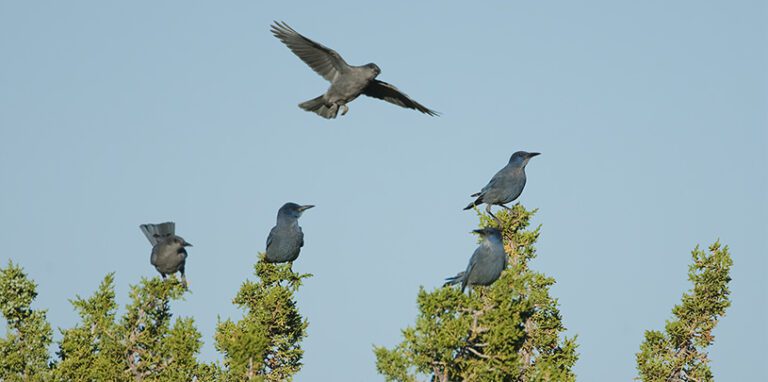
Tree ring data helps scientists and land managers protect old-growth pinyon and juniper trees.
Juniper and pinyon trees can live a long time when the going is tough. These gnarled and majestic sentinels of the hills are adapted to the Southwest’s dry climate, so they grow very slowly. Looks can be deceiving. Relatively small trees can reach a thousand years old.
Old-growth juniper and pinyon trees are the lifeblood of many plants and animals, including the pinyon jay. The jay relies on pinyon nuts for food, and in return, spreads the seeds across the landscape. Pinyon and juniper forests have also supported human life for thousands of years. The forests provide food, firewood, building materials, medicine, and more for Indigenous peoples of the Colorado Plateau. Additionally, old pinyon and juniper trees store carbon in their stems (living and dead), which is important for reducing the impact of climate change.
Old-growth advocacy
Knowing how old trees are helps us advocate for their protection. Across the West, federal agencies propose large-scale removal of pinyon and juniper trees. They often use a 150-year cutoff to determine which trees to cut, claiming that trees younger than 150 years are unnatural and moving into areas where they historically have not grown.
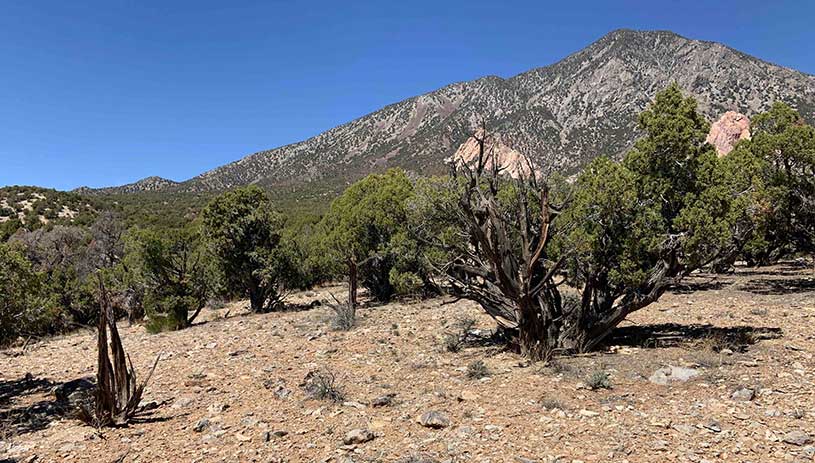
I recently visited a pinyon and juniper forest in southern Utah where a federal agency was proposing one such “vegetation treatment,” a gentler term for shredding large swaths of pinyon and juniper trees.
Many of the trees looked older than 150 years. But exactly how old were they? If we could show the agency that these pinyon and juniper trees had been rooted here for centuries, we might be able to protect this swath of forest.
How can you tell how old a tree is?
To determine the age of a tree, we need to see and count its growth rings. Each ring represents one year. Researchers use a small hand-drill-like tool to pull out a straw-size sample of the tree trunk, called a tree core sample.
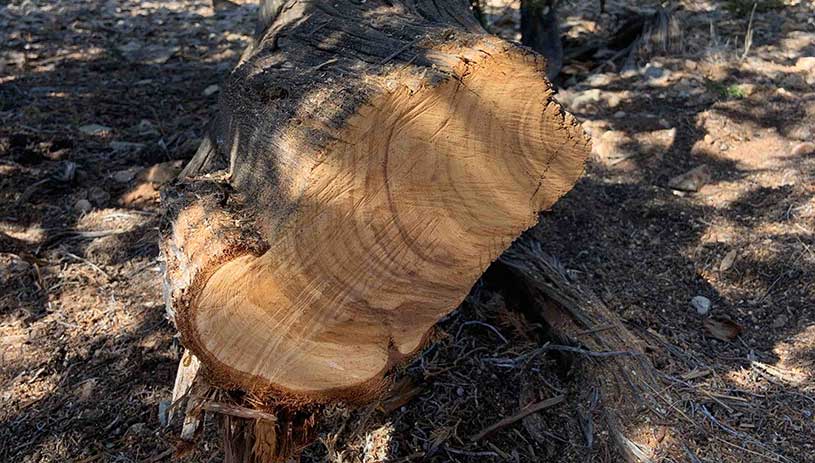
For the dense wood of juniper trees, it is difficult to extract a useable core. It’s more effective to cut a branch off the tree, slice it like a large cookie, and take the sample back to the lab. For both cores and slices, it is necessary to sand the wood to see and count the growth rings. Often growth rings are so small, due to harsh growing conditions and limited precipitation, that magnification is needed to see and count the rings.
Aging trees is an important scientific tool for understanding the historical vegetation of a region. Researchers only core or cut a handful of trees at a site, which does not alter the composition or look of the forest.
Centuries-old trees are growing in southern Utah
I returned to the area with Bill Gray, who studies Utah juniper at the Natural History Museum of Utah. Bill has a research permit to core and cut juniper and pinyon on public lands in southern Utah.
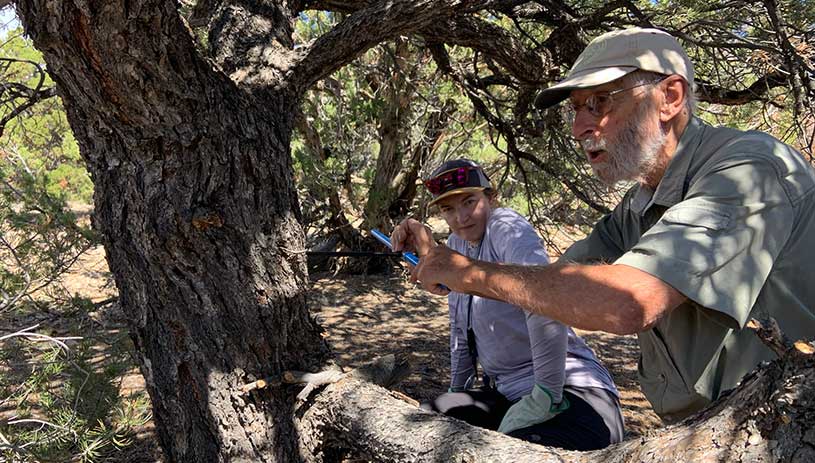
One of the first juniper trees Bill cut had 530 rings, meaning it had been growing for over five centuries. Another juniper tree was 783 years old! We cored three pinyons, which turned out to be 174 to 294 years old. All these trees were in the area the agency had proposed for cutting.
Taking action to protect pinyon and juniper
Agencies give many reasons for pinyon and juniper removal, such as seeking to reduce the threat of fire or improving wildlife habitat. But those goals are not always applicable or appropriate at the proposed sites. We recognize that in some places, there can be justifiable reasons for removing some trees. But such removal must be undertaken selectively (not cutting old growth trees), and for the right reasons.
So we asked the agency to reconsider its plans. Cutting these centuries-old trees would not make the site more natural. In fact, it could do the opposite. Non-native plants often move in after forests are cut, and pasture grasses are often planted in place of the pinyon and juniper trees, transforming native vegetation on public lands into feedlots for cattle.
With our research in hand, we alerted the agency of the age of these trees to make clear that this pinyon and juniper forest has been around for centuries.
Agency cancels clear-cutting
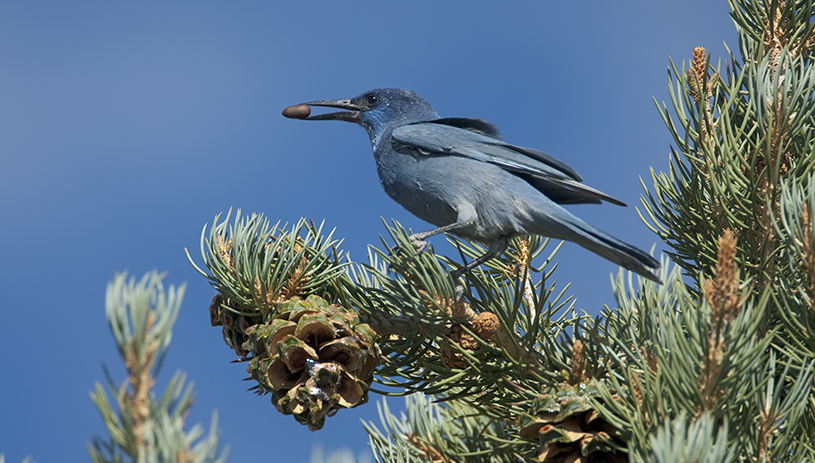
Good news! The agency cancelled its plans at this site, thereby protecting old-growth pinyon and juniper trees and the biological soil crusts, native wildflowers, and shrubs underneath. Birds, pollinators, and other wildlife will continue to utilize this woodland. These old trees have genetic tools that have allowed them to survive centuries of droughts, wind storms, winters, and other extremes that could prove useful for adapting to the changing climate.
We applaud the agency’s decision to maintain these old-growth trees, which will continue to store carbon and support a wide web of life.
It’s a priority for us too. We will continue to keep an eye on this site and others across the Colorado Plateau. And we will continue to advocate for a more science-based approach to the management of pinyon and juniper forests.

